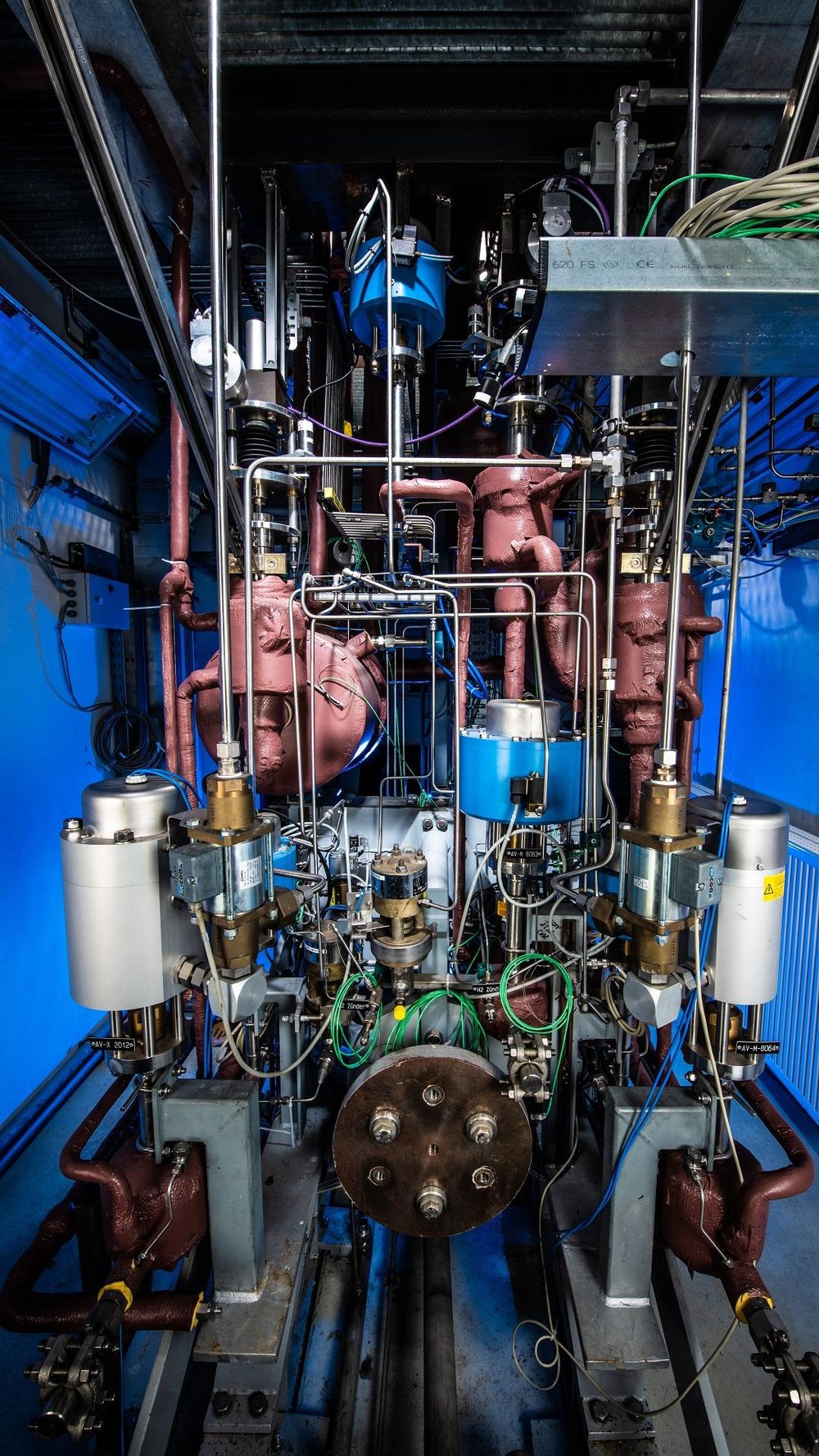Test Bench P6
Areas of application
- High-pressure test bench for cryogenic space propulsion systems
- Pre-development of individual components
Fuels
- gaseous hydrogen
- liquid oxygen
- methane gaseous & liquid
Number of test positions
- two test positions
History
Parallel to the engine tests that have been taking place since the 1960s, there is also a long tradition of research at the DLR site in Lampoldshausen, which provides important results in various areas of space propulsion and energy technology. Special research test stands have been set up for this purpose. The oldest of these is P6, which was built in 1966 and consists of the two test cells P6.1 and P6.2. Originally, high-energy rocket propellant combinations hydrogen / fluorine and hydrogen / oxygen vapor generators were developed here and research into lasers was carried out.
Here, fuels can be provided in a unique way that is not available in Europe (keyword: subcooled LOX and LNG). At the P6.1 test stand, it is possible to test rocket engines, test various operating cycles of the propulsion systems and optically evaluate combustion processes to verify modeling programs. Since the P6.1 was built with a focus on diagnostic access and precise, flexible measurement technology and the size of the test bench is in the technology sector, there are very few equivalent facilities in the world. At P6.2, altitude simulation technologies are developed and special nozzle flow phenomena are researched.
The P6 test bench thus complements the M3 technical center, where tests are carried out under laboratory conditions, and the P8 research and technology test bench, where combustion chamber ratios and fuel combinations can be tested under real engine conditions.



